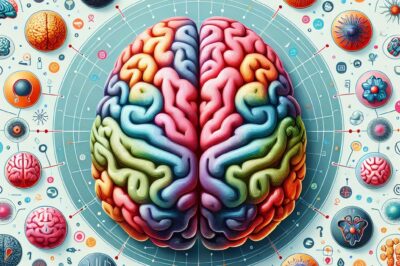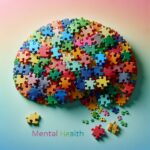Key Takeaways
- The brain is divided into several key regions, each responsible for specific functions, from processing emotions to controlling movement.
- The frontal lobe is crucial for decision-making and voluntary movement, making it vital for daily activities.
- The parietal lobe processes sensory information, helping us understand our environment and react accordingly.
- The temporal lobe plays a significant role in language comprehension and memory storage.
- The occipital lobe is the brain’s primary center for visual processing, essential for interpreting the world around us.
Overview of the Brain’s Key Regions and Their Functions
The human brain is an intricate organ, orchestrating a symphony of functions that allow us to think, feel, and move. Each region of the brain has a unique role, working in harmony to create the complex tapestry of human behavior and cognition. Understanding these regions helps us appreciate how our brain manages everything from basic survival instincts to sophisticated thought processes.
Definition and Importance of Brain Regions
Brain regions are distinct areas within the brain, each with specific responsibilities. These regions coordinate to perform complex tasks, like problem-solving, emotional regulation, and physical coordination. Recognizing the importance of each brain region allows us to better understand how injuries or diseases affecting these areas can impact our lives.
“The brain is the command center for the human nervous system, receiving input from the sensory organs and sending output to the muscles.” – National Institute of Neurological Disorders and Stroke
Therefore, each part of the brain must work seamlessly to maintain the body’s homeostasis and enable us to interact with the world effectively.
Role of Anatomy in Brain Functionality
Anatomy plays a pivotal role in how the brain functions. The physical structure of the brain, including its lobes, hemispheres, and layers, determines how information is processed and transmitted. The brain’s anatomy is not just about its shape but also about how neurons are organized and connected. These connections are crucial for efficient communication between different brain areas, influencing everything from reflexes to reasoning.
Understanding Brain Divisions: Forebrain, Midbrain, Hindbrain
The brain can be divided into three major parts: the forebrain, midbrain, and hindbrain. Each of these divisions plays a critical role in managing various bodily functions.
The forebrain is the largest part and is responsible for higher cognitive functions, including thinking, planning, and understanding language. It includes structures like the cerebral cortex and the thalamus.
The midbrain acts as a relay station, processing auditory and visual information and coordinating movement. For a deeper understanding of brain functions, explore the brain anatomy and how it works.
The hindbrain includes the cerebellum and brainstem, controlling essential functions like breathing and heart rate, and maintaining balance and posture.
Major Lobes of the Cerebral Cortex
The cerebral cortex is divided into four main lobes, each with distinct functions. These lobes work together to process information and execute tasks, forming the foundation of our cognitive abilities.
Frontal Lobe: Controlling Thought Processes
The frontal lobe is located at the front of the brain and is associated with higher cognitive functions, such as reasoning, planning, and problem-solving. It also plays a role in controlling voluntary movements and is involved in expressive language.
For instance, when you decide to wave your hand, your frontal lobe sends signals to the muscles in your arm to carry out the action.
Most importantly, the frontal lobe houses the prefrontal cortex, which is crucial for executive functions like attention and decision-making. This region helps us plan our actions and predict the consequences, making it essential for everyday life.
Parietal Lobe: Processing Sensory Information
The parietal lobe is located near the top and back of the head. It processes sensory information from various parts of the body, including touch, temperature, and pain. This lobe helps us understand spatial orientation and body awareness. For a deeper understanding of brain anatomy and its functions, you can explore more in this comprehensive guide.
When you touch a hot stove, for example, the parietal lobe helps you feel the heat and react quickly to avoid injury. This sensory processing is crucial for interacting with our environment safely and effectively.
“The parietal lobe integrates sensory information from different modalities, particularly determining spatial sense and navigation.” – Encyclopedia of Neuroscience
Besides that, the parietal lobe also plays a role in language processing and mathematical reasoning, showcasing its versatility in managing various cognitive tasks.
Hippocampus: Formation and Retrieval of Memories
The hippocampus is a small, seahorse-shaped structure located within the temporal lobe. It plays a crucial role in forming new memories and connecting emotions and senses, such as smell and sound, to these memories. When you remember a past event, the hippocampus retrieves and reconstructs the memory, allowing you to relive the experience.
Because of its involvement in memory formation, the hippocampus is vital for learning new information. It helps consolidate short-term memories into long-term storage, ensuring that important information is retained over time. This process is essential for academic learning and everyday tasks, such as remembering where you parked your car.
“Damage to the hippocampus can lead to difficulties in forming new memories, a condition often seen in Alzheimer’s disease.” – Alzheimer’s Association
In addition to its role in memory, the hippocampus is also involved in spatial navigation, helping you understand and remember the layout of your environment. This function is particularly important for activities that require a sense of direction, like driving or navigating a new city.
Amygdala: Emotion Regulation and Response
The amygdala is a small, almond-shaped cluster of nuclei located deep within the temporal lobes. It is primarily responsible for processing emotions, such as fear, anger, and pleasure. The amygdala helps us react to emotional stimuli by triggering appropriate responses, such as the fight-or-flight reaction in dangerous situations.
Besides its role in emotional processing, the amygdala is involved in forming emotional memories. For example, if you have a frightening experience, the amygdala helps encode the memory, ensuring that you remember the event and avoid similar situations in the future. This function is crucial for survival, as it helps us learn from past experiences and adapt our behavior accordingly.
Basal Ganglia: Coordination of Movement
The basal ganglia are a group of nuclei located deep within the brain, responsible for coordinating movement and motor control. These structures work together to ensure smooth, voluntary movements by regulating muscle tone and controlling the initiation and termination of movements.
When you decide to pick up a cup, for instance, the basal ganglia help coordinate the necessary muscle movements, ensuring that your hand reaches the cup smoothly and efficiently. This coordination is essential for performing everyday tasks, such as walking, writing, and playing sports.
Thalamus: Sensory Relay Station
The thalamus is a large, egg-shaped structure located at the top of the brainstem. It acts as a relay station for sensory information, processing input from the senses and transmitting it to the appropriate areas of the cerebral cortex for further processing.
When you see a bright light, for example, the thalamus receives the visual information and sends it to the occipital lobe for interpretation. This relay function is crucial for maintaining awareness of our environment and responding appropriately to sensory stimuli.
Besides sensory processing, the thalamus also plays a role in regulating consciousness, sleep, and alertness. It helps maintain a state of wakefulness and ensures that we can respond quickly to changes in our environment.
Hypothalamus: Regulating Hunger, Thirst, and Temperature
The hypothalamus is a small but vital structure located below the thalamus. It plays a key role in maintaining the body’s internal balance, or homeostasis, by regulating essential functions such as hunger, thirst, and body temperature.
When you’re hungry, the hypothalamus signals the body to eat, ensuring that you consume enough nutrients to meet your energy needs. Similarly, when you’re thirsty, it prompts you to drink water, maintaining proper hydration levels. This regulation is crucial for survival, as it helps prevent dehydration and malnutrition.
In addition to regulating hunger and thirst, the hypothalamus also controls body temperature by adjusting metabolic processes and initiating behaviors like shivering or sweating. This function ensures that the body remains within a safe temperature range, protecting vital organs from damage due to extreme heat or cold.
Critical Components of the Brain Stem
The brain stem is a critical structure located at the base of the brain, connecting the brain to the spinal cord. It is responsible for controlling many basic life functions, such as breathing, heart rate, and blood pressure. The brain stem consists of three main parts: the medulla oblongata, the pons, and the midbrain. Understanding these components can aid in recognizing boundaries within relationships and their impact on overall health.
Medulla Oblongata: Basic Bodily Function Control
The medulla oblongata is the lowest part of the brain stem, responsible for regulating essential bodily functions, such as breathing, heart rate, and blood pressure. It ensures that these functions operate smoothly and automatically, without conscious effort. Understanding the role of the medulla oblongata can be crucial for those exploring key facts about brain functions.
For instance, when you exercise, the medulla oblongata adjusts your breathing and heart rate to meet the increased oxygen demands of your muscles. This regulation is crucial for maintaining homeostasis and ensuring that your body can respond effectively to changes in activity levels.
Pons: Communication Bridge Within the Brain
The pons is located above the medulla oblongata and acts as a communication bridge between different parts of the brain. It relays information between the cerebral cortex and the cerebellum, helping coordinate movement and balance.
In addition to its role in motor control, the pons also plays a role in regulating sleep and arousal. It helps control the transition between sleep and wakefulness, ensuring that you can maintain a regular sleep cycle and respond appropriately to environmental stimuli. Understanding these processes can also aid in cultivating an adaptable mindset to better manage changes in your environment.
Midbrain: Coordination of Movement and Motivation
The midbrain is the uppermost part of the brain stem, involved in coordinating movement and motivation. It processes auditory and visual information and helps regulate reflexive responses to these stimuli.
When you hear a loud noise, for example, the midbrain helps you turn your head toward the sound, allowing you to identify its source. This coordination is crucial for maintaining awareness of your surroundings and responding quickly to potential threats.
Interconnections and Collaboration Among Brain Areas
The brain’s various regions work together to perform complex tasks, such as thinking, feeling, and moving. This collaboration is essential for maintaining cognitive function and ensuring that the brain can adapt to changing circumstances.
Integration between brain areas allows us to process information efficiently, make decisions, and execute actions. This interconnectedness is crucial for maintaining cognitive flexibility and adapting to new situations, ensuring that we can navigate the world effectively.
Integration of Brain Regions in Cognitive Function
Cognitive function relies on the seamless integration of various brain regions, each contributing to different aspects of thought and behavior. The frontal lobe, for example, works with the hippocampus to form and retrieve memories, while the parietal lobe processes sensory information to help us understand our environment.
This integration allows us to perform complex tasks, such as problem-solving, planning, and decision-making. It also enables us to learn from experience and adapt our behavior accordingly, ensuring that we can navigate the world effectively and respond to changing circumstances.
How Brain Areas Collaborate for Emotional Responses
Emotional responses are complex and involve multiple brain regions working together. The amygdala, known for processing emotions like fear and pleasure, plays a central role. However, it does not work alone. It interacts closely with the prefrontal cortex, which helps regulate and control emotional reactions. This collaboration ensures that our responses are appropriate and measured, rather than impulsive. For those looking to improve their emotional regulation, exploring proactivity strategies can be beneficial.
The hippocampus also plays a part by linking emotions to memories. When you experience a strong emotion, the hippocampus helps you remember the event, making it more likely that you’ll recall it in the future. This process allows you to learn from past experiences, adjusting your behavior to avoid negative outcomes.
Moreover, the hypothalamus helps mediate the physical aspects of emotional responses, such as increased heart rate or sweating when you’re anxious. By coordinating these various regions, the brain ensures that emotional responses are well-rounded and adaptive.
Influence of Interconnected Brain Regions on Physical Movement
- The basal ganglia help regulate voluntary movements, ensuring smooth and coordinated actions.
- The cerebellum fine-tunes motor activities, maintaining balance and posture.
- The motor cortex in the frontal lobe initiates movement by sending signals to the muscles.
- The brainstem controls involuntary movements, like breathing and reflexes.
Physical movement is a sophisticated process that requires the coordination of multiple brain regions. The motor cortex in the frontal lobe initiates voluntary movements by sending signals to the muscles, while the basal ganglia help regulate these movements, ensuring they are smooth and purposeful.
The cerebellum plays a crucial role in fine-tuning motor activities, maintaining balance and posture. It ensures that movements are precise and coordinated, allowing us to perform tasks like writing or playing sports with accuracy.
Meanwhile, the brainstem oversees involuntary movements, such as breathing and reflexes, ensuring that these essential functions operate seamlessly. By working together, these interconnected brain regions enable us to move efficiently and adaptively in response to our environment.
Visual Guide to Brain Areas
Understanding the brain’s structure and function can be greatly enhanced by visual aids. Diagrams and interactive tools offer a clearer picture of how different regions are organized and how they interact with each other. For more insights, explore these adaptability tips to see how the brain can adjust to new information and experiences.
Annotated Diagrams and Their Interpretations
Annotated diagrams of the brain provide a detailed view of its various regions and their functions. These diagrams often highlight key areas, such as the lobes of the cerebral cortex and the structures of the limbic system, helping learners visualize the brain’s complexity.
By studying these diagrams, you can gain a deeper understanding of how different parts of the brain contribute to cognitive and emotional processes. This knowledge can be particularly useful for students and educators seeking to explore the brain’s intricate workings.
Interactive Tools for Learning Brain Functions
Interactive tools, such as online simulations and virtual reality experiences, offer an engaging way to learn about brain functions. These tools allow users to explore the brain in a hands-on manner, manipulating structures and observing how they interact in real-time.
By using these resources, learners can develop a more comprehensive understanding of the brain’s complexity, enhancing their ability to grasp challenging concepts and apply their knowledge in practical settings. For example, understanding intrinsic motivation can be crucial in maintaining the drive to learn and apply new information effectively.
Frequently Asked Questions (FAQ)
- What function does the frontal lobe serve?
- How does the hippocampus affect memory?
- What is the role of the hypothalamus in the body?
- How are emotions processed in the brain?
- What is the significance of the brain stem?
The frontal lobe is responsible for higher cognitive functions, such as reasoning, planning, and voluntary movement. It helps us make decisions and control our actions, playing a vital role in our daily lives.
The hippocampus is crucial for memory formation and retrieval. It helps consolidate short-term memories into long-term storage, ensuring that important information is retained over time. This process is essential for learning and remembering past experiences.
The hypothalamus regulates essential bodily functions, such as hunger, thirst, and body temperature. It helps maintain the body’s internal balance, ensuring that we remain healthy and responsive to our environment.
What function does the frontal lobe serve?
- Decision-making
- Voluntary movement
- Problem-solving
- Expressive language
The frontal lobe is essential for decision-making and voluntary movement. It helps us plan our actions and predict the consequences, allowing us to navigate the world effectively. This region also plays a role in problem-solving and expressive language, making it crucial for communication and social interaction.
Besides these functions, the frontal lobe is involved in regulating emotions and controlling impulses, ensuring that our behavior is appropriate and adaptive. This regulation is vital for maintaining healthy relationships and achieving personal goals.
How does the hippocampus affect memory?
The hippocampus is responsible for forming and retrieving memories. It helps consolidate short-term memories into long-term storage, ensuring that important information is retained over time. This process is essential for learning and remembering past experiences, allowing us to adapt our behavior and make informed decisions.
What is the role of the hypothalamus in the body?
The hypothalamus plays a key role in maintaining the body’s internal balance, or homeostasis. It regulates essential functions such as hunger, thirst, and body temperature, ensuring that we remain healthy and responsive to our environment.
By controlling these functions, the hypothalamus helps prevent dehydration, malnutrition, and temperature-related damage, protecting vital organs and ensuring our survival.
How are emotions processed in the brain?
Emotions are processed by multiple brain regions, including the amygdala, prefrontal cortex, and hippocampus. The amygdala is responsible for processing emotions like fear and pleasure, while the prefrontal cortex helps regulate and control emotional reactions. The hippocampus links emotions to memories, allowing us to learn from past experiences and adapt our behavior accordingly.
What is the significance of the brain stem?
The brain stem is crucial for controlling basic life functions, such as breathing, heart rate, and blood pressure. It connects the brain to the spinal cord, ensuring that essential functions operate smoothly and automatically, without conscious effort.
By regulating these functions, the brain stem ensures that we remain alive and responsive to our environment, providing the foundation for more complex cognitive processes.









Leave a Reply